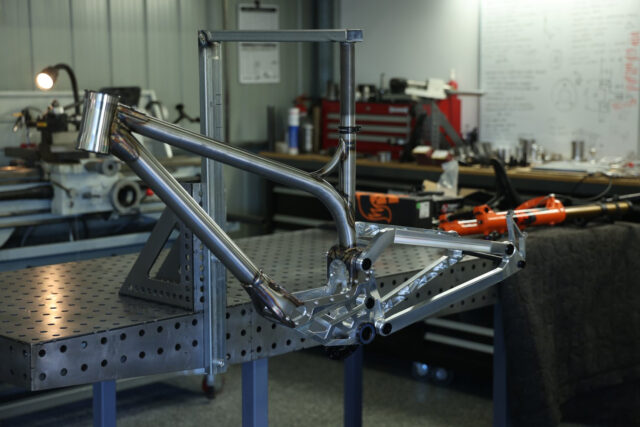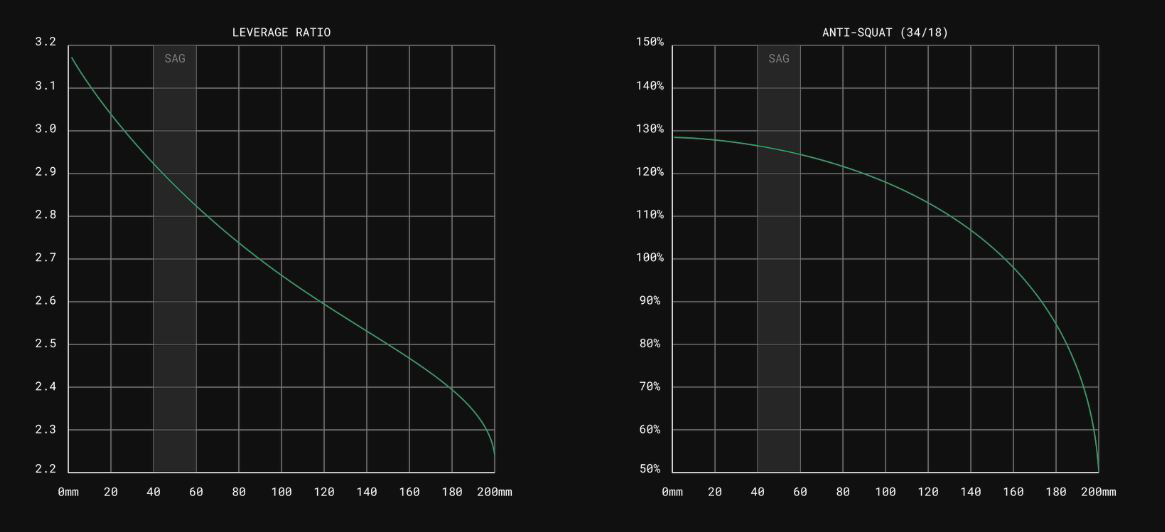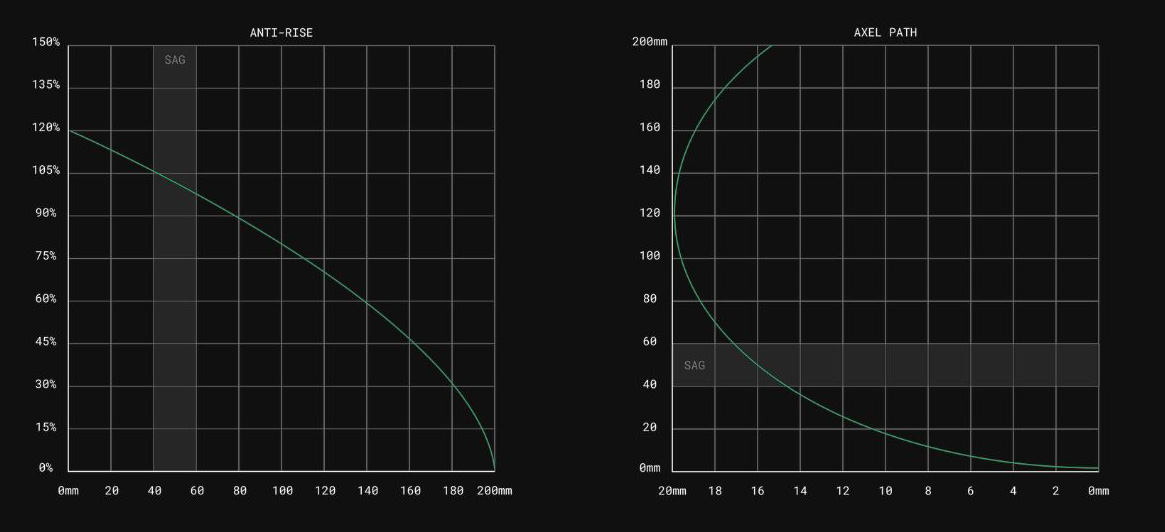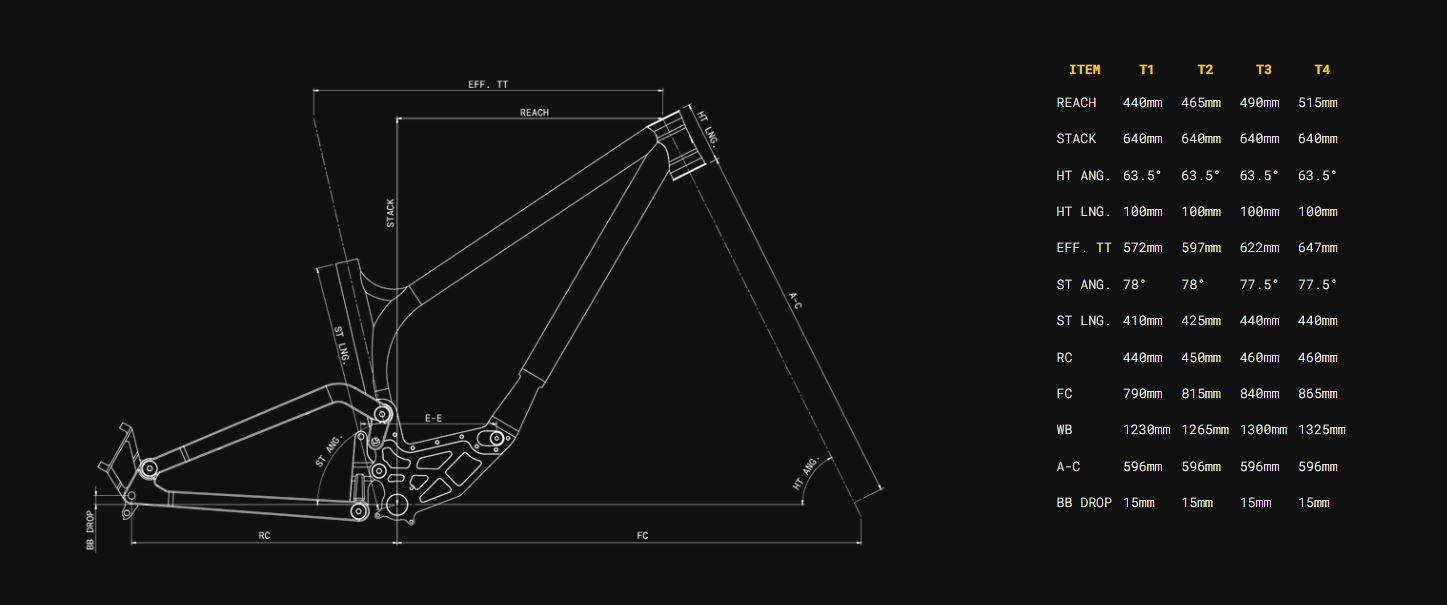Trinity Gravity
Wheel Size: 29’’ front / 27.5’’ rear, or 29’’ rear option on sizes T3 and T4
Travel: 160 to 200 mm rear / 180 or 200 mm front (see below for details)
Geometry highlights:
- Sizes offered: T1, T2, T3, T4
- Headtube angle: 63.5°
- Seat tube angle: 77.5° (size T3)
- Reach: 490 mm (size T3)
- Chainstay length: 440 to 460 mm (varies by size)
Frame material: Steel and aluminum
Price: $9,000 AUD (frame only, no shock; $6,093 USD at time of publishing)

Intro
We’ve already spoken to the guys behind Trinity a whole lot on here, having had Mic Williams on Bikes & Big Ideas episodes 93, 125, and 144, with designer Chase Warner joining for the middle episode of those three.
And while the design of the bike has evolved a fair bit since we first started hearing about it, the core concept is the same — a gravity bike with a steel front triangle and a machined aluminum rear end, with an incredible amount of modularity and the ability to convert between Enduro and DH bike duty, as well as to be run with either a conventional drivetrain or a gearbox — including Trinity’s own upcoming version that we discuss in length in the podcasts, linked above.
The bike is, straightforwardly, just named the “Gravity” and there’s a whole lot going on when it comes to its design and features, so let’s get right to it:
The Frame
The Trinity frame combines a steel front triangle with a machined aluminum rear end, and adds a modular bolt-in bottom bracket shell (also machined from aluminum) that gives options for running a conventional drivetrain, a gearbox that uses the Pinion mounting standard, or most intriguingly, Trinity’s own gearbox which is still in development, but said to be coming soon.
We’ll do a deeper dive on the Trinity gearbox when it’s officially released, but in short, it’s something like a continuation of the arrangement pioneered by Honda with the RN-01 way back in the day, with a standard cassette and chain drive system packaged into the main frame to massively reduce unsprung weight at the rear wheel, better protect the system from dirt and impacts, and so on. We go through a lot of the history of the gearbox development in the podcast series linked above, and Ep.144 in particular covers a lot of the current prototype version that Trinity is moving forward with.

The rest of the frame details are also extremely interesting. For one thing, the Trinity is designed to be run as either a 160 or 175mm-travel Enduro bike (with a 205 x 60 or 65 mm Trunnion shock and a 180mm-travel single crown fork) or as a 200mm-travel proper DH bike by swapping in a 225 x 75 mm shock and a 200 / 203 mm travel dual crown. A flip chip at the forward shock mount moves the trunnion mounting bolts to compensate for the change in shock length. The Trinity frame uses a 29’’ front wheel and has modular bolt-on dropouts that give options for running a 27.5’’ or 29’’ rear wheel (though the 29’’ rear wheel is only compatible with the longer chainstays used on the two larger sizes — more on that in a minute).
No matter how you configure the Trinity Gravity, it’s a high-pivot frame using an i-Track suspension layout — essentially an upside-down Horst link with a high pivot and idler pulley a-la the Norco Range and others, but with the idler pulley mounted on the seatstay such that it moves with the rear suspension (in contrast to the Range, which puts the idler concentric with the main pivot). Doing so gives Trinity additional control over the anti-squat curve, independent of other variables, and Trinity helpfully publishes a nice assortment of kinematic graphs to help make sense of what the suspension is up to.


Most of that looks nicely sorted out. The leverage curve is fairly, but not outrageously progressive and a relatively straight (ish) line, and anti-squat is around 125% at sag, before falling off dramatically deeper in the travel (where you’re not going to be pedaling anyway). Anti-rise starts quite high at around 120% but falls off dramatically to around 0% at bottom out, a bigger swing than most modern bikes experience, but also making for overall lower anti-rise than a lot of other high-pivot bikes, which is probably a good thing for most folks.
It’d be nice if Trinity published anti-squat values in a lower gear as well (their stated numbers are in a 34–18 combo) but what’s shown looks great, and stating any gear ratios at all for the curve is still well ahead of what most companies have on offer. The axle path goes rearward by about 20 mm at around 120 mm of travel before coming back forward a bit by bottom out. Pedal kickback numbers aren’t stated, but given the layout, we’d expect them to be quite low in the higher, descending-oriented gears and creeping higher in the lower ones.
In keeping with the highly-customizable nature of the bike, the head tube is a straight 56 mm affair for maximum compatibility with offset headsets and the cable routing is fully external to keep maintenance and part swaps as easy as possible. The rear dropouts are spaced for a 157 mm rear wheel, paired with an 83 mm bottom bracket (if configured with a conventional one instead of a gearbox).
Fit & Geometry
Trinity is offering the Gravity frame in four sizes, labeled T1 through T4, which roughly correlate to Small through XL in most brands’ sizing schemes. Reach starts at 440 mm for the T1 and grows by 25 mm per size, with the T4 topping out at 515 mm. The effective seat tube angle is 78° for the T1 and T2 and falls off very sightly to 77.5° on the two larger sizes. The headtube angle is 63.5° irrespective of frame size, and the chainstays start at 440 mm on the T1 and grow by 10 mm with each of the next two steps up the size range; the T3 and T4 then share the longest 460 mm stays.
The Builds
Trinity isn’t offering complete builds (or even rear shocks) on the Gravity at this stage, so it’s up to you to buy a frame and deck it out as you see fit. And while the potential for combining an Enduro and DH bike into one is quite intriguing, it doesn’t come cheap: a bare frame without a shock runs $9,000 Australian (about $6,100 US at the time of publication).
That’s… certainly not cheap, though the Trinity frames are made in Australia, and the initial pre-order batch is for just 25 frames. Fabrication will begin when the pre-order closes, and frames are slated to start shipping 8–12 weeks later.

Some Questions / Things We’re Curious About
(1) First and foremost, how does the Trinity ride?
(2) How cleanly does the Enduro to DH conversion work? Are there notable compromises made to either, or has Trinity made one bike that can truly do both?
(3) And though it’s not ready to be released just yet, we’re also very, very curious about Trinity’s upcoming gearbox and how well it works on trail.
Bottom Line (For Now)
The Trinity Gravity is one of the most interesting new bikes to come along in a while, and we’re very much hoping to be able to get on one to see how it stacks up — and to learn more about their upcoming gearbox. Stay tuned for more information soon.

